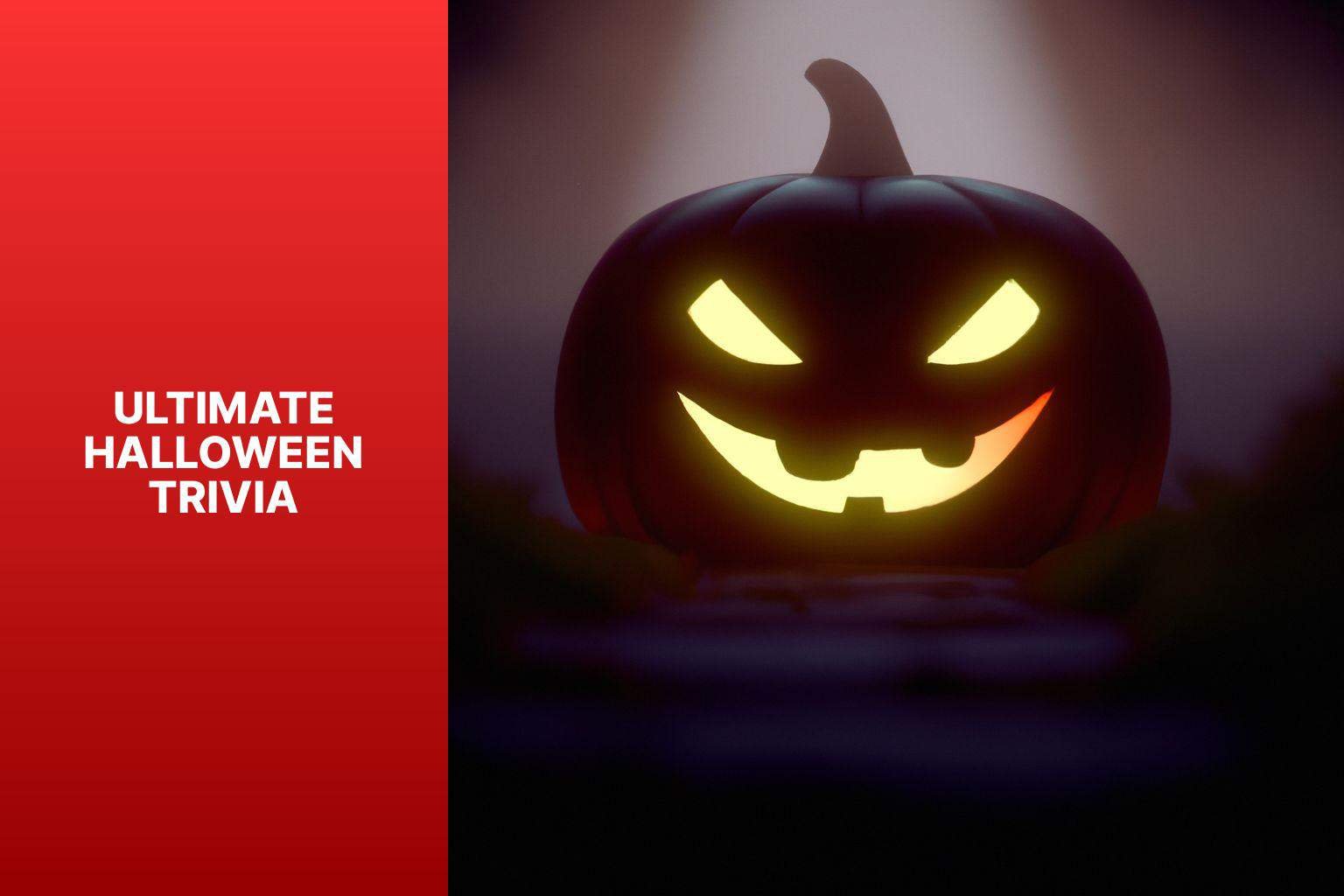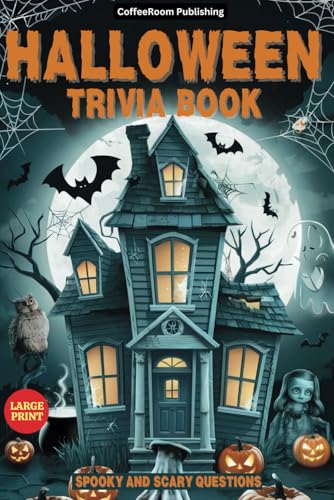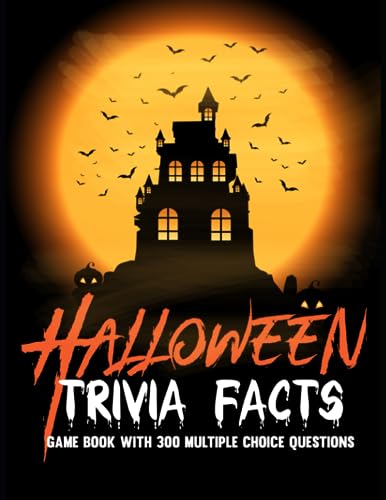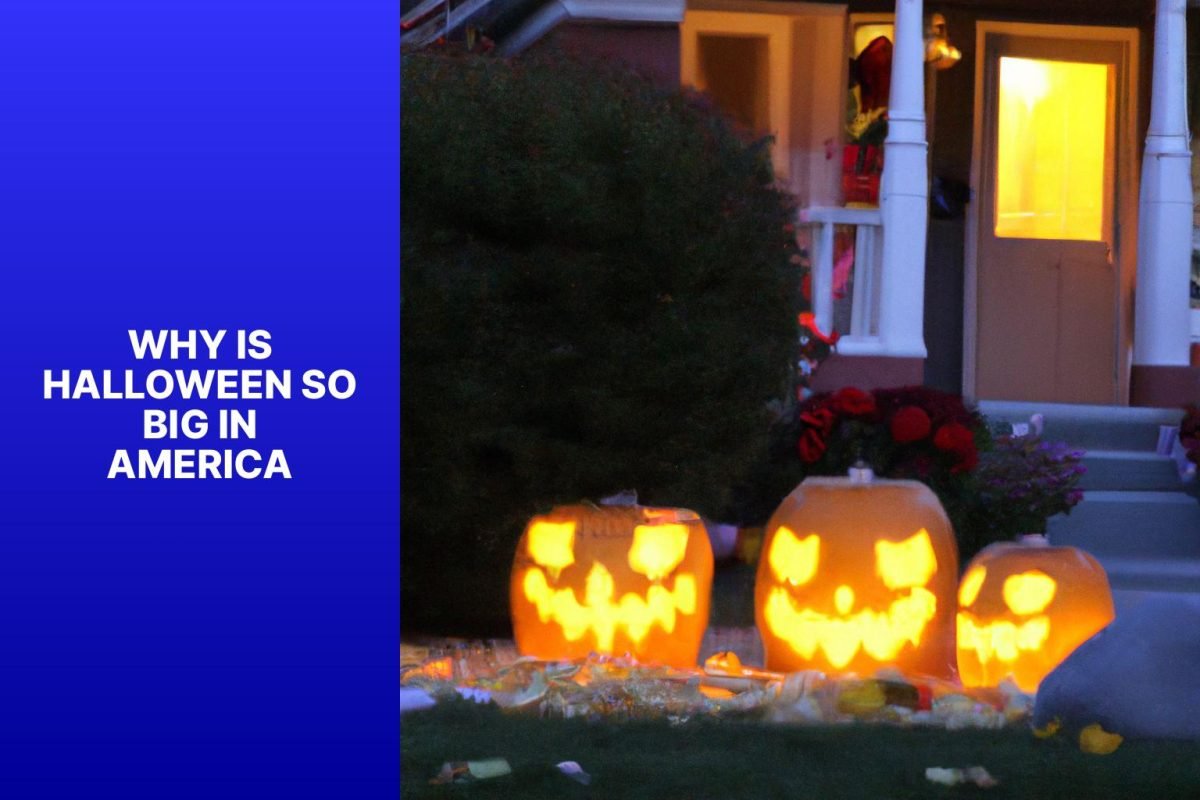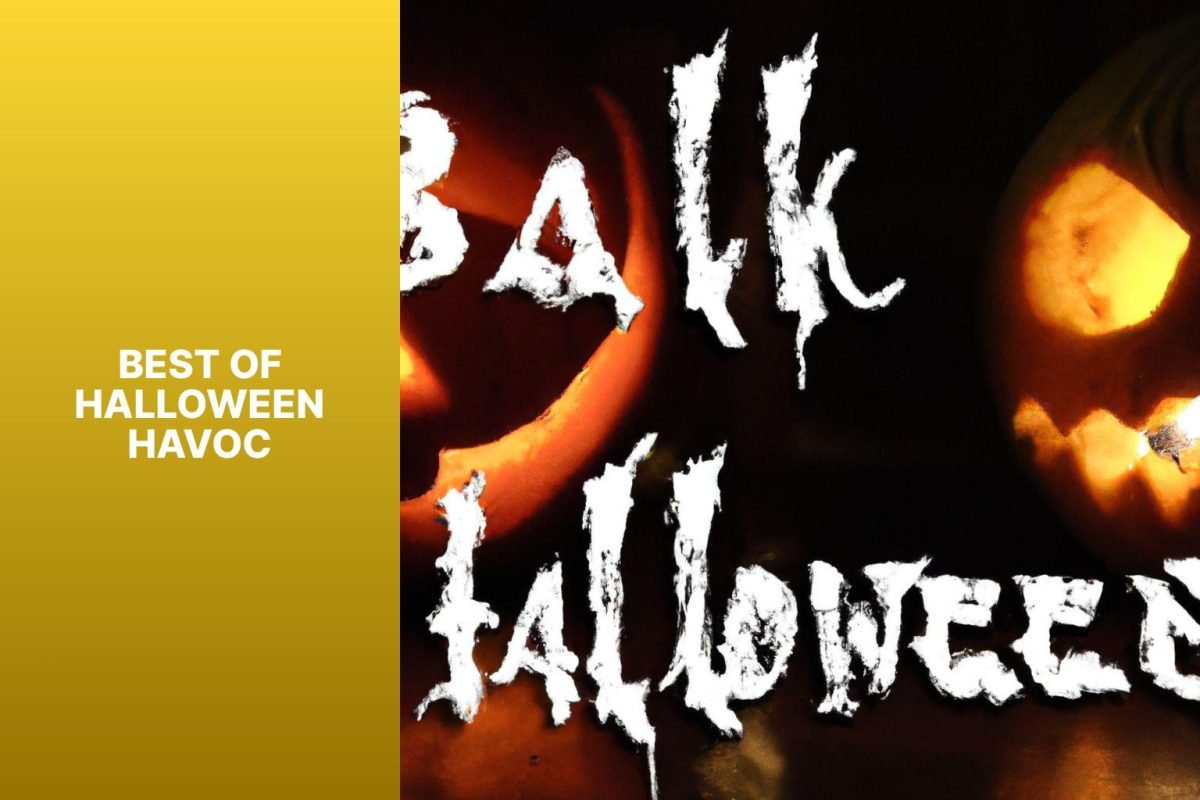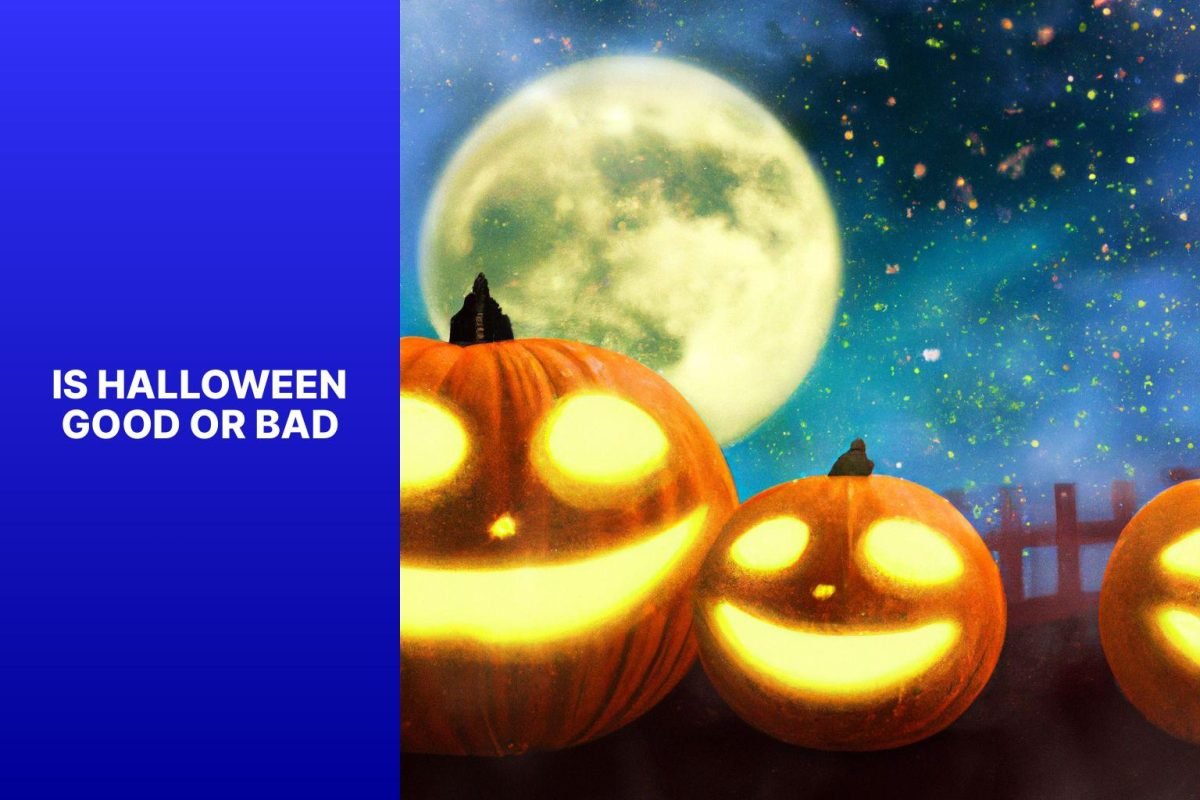Halloween is a holiday known for its spooky and festive atmosphere, filled with costumes, candy, and fun. But how much do you really know about this beloved holiday? Halloween trivia is a great way to test your knowledge and learn some interesting facts about the history, traditions, and symbols associated with Halloween.
Understanding the origins of Halloween is essential to appreciate its significance. Dating back over 2,000 years, Halloween has its roots in the ancient Celtic festival of Samhain, celebrated to mark the end of harvest season and the beginning of winter. Over time, it evolved into a holiday that combines pagan, Christian, and cultural traditions.
Some popular Halloween traditions that have stood the test of time include trick-or-treating, where children go door-to-door in costume asking for candy; carving pumpkins into Jack-o’-lanterns, a tradition inspired by an Irish folktale; costume parties, allowing people of all ages to dress up as their favorite characters or creatures; and haunted houses, where people seek thrills and scares in specially designed spooky settings.
Halloween is also known for its associated symbols, each with its own unique history and meaning. From black cats, often associated with witches and superstitions, to witches themselves, embodying both fear and fascination; bats, often associated with vampires and the night; and spiders, symbolizing patience and creativity, these symbols add to the mysterious allure of Halloween.
To enhance your Halloween trivia knowledge, we’ve compiled a list of fun Halloween facts and trivia questions. Test your knowledge about the origin of the term “jack-o’-lantern,” the significance of bobbing for apples, the purpose of wearing costumes, and the history of trick-or-treating.
So, get ready to impress your friends and family with your Halloween trivia knowledge and dive deep into the fascinating world of Halloween history, traditions, symbols, and facts.
Key takeaway:
- Halloween Trivia celebrates the history and traditions of Halloween: This fun activity allows people to learn interesting facts about the holiday, its symbols, and traditions.
- Explore the origins of Halloween: Discover the rich history of Halloween and how it has evolved over time, from ancient Celtic festivals to modern-day celebrations.
- Discover popular Halloween traditions and their significance: Learn about the origins and meanings behind popular Halloween activities like trick-or-treating, carving jack-o’-lanterns, attending costume parties, and visiting haunted houses.
What Is Halloween Trivia?

Photo Credits: Rickyshalloween.Com by Bradley Williams
Halloween trivia is a collection of intriguing facts about the holiday. It offers individuals the opportunity to delve deeper into the history, customs, and symbols associated with Halloween. This wealth of knowledge can be imparted at gatherings or utilized for Halloween-themed quizzes and games. Noteworthy instances of Halloween trivia encompass the origins of trick-or-treating, the importance of jack-o’-lanterns, and the evolution of Halloween costumes. By exploring Halloween trivia, individuals gain a better understanding of this widely celebrated occasion and its cultural significance.
History of Halloween
Halloween has a captivating history rooted in ancient Celtic traditions, showcasing our enduring fascination with the supernatural and our desire to honor those who came before us. It all originated from the festival of Samhain, which marked the end of the harvest season and the beginning of winter. The Celts firmly believed that spirits could freely roam the Earth during this time, prompting them to light bonfires and don costumes to ward off any unwanted supernatural visitors.
In the 8th century, Pope Gregory III designated November 1st as All Saints’ Day, a special day set aside to pay tribute to Christian saints and martyrs. Interestingly, some of the traditions from Samhain, such as donning costumes and lighting bonfires, were incorporated into this day. As time went on, the evening before All Saints’ Day became known as All Hallows’ Eve, which eventually evolved and transformed into the Halloween we know and love today.
Halloween made its way to America thanks to Irish and Scottish immigrants in the late 19th century. Once it arrived, the holiday quickly morphed into a community-centered celebration, featuring activities like pumpkin carving, bobbing for apples, and of course, the widely anticipated tradition of trick-or-treating. Nowadays, Halloween is widely celebrated, seamlessly blending ancient traditions with modern festivities.
As you immerse yourself in the spooky season, take a moment to appreciate and reflect upon the rich and captivating history that has shaped and molded this beloved holiday known as Halloween.
Popular Halloween Traditions
From dressing up in costumes to carving spooky pumpkins, Halloween brings us a world of traditions to indulge in. In this section, we’ll dive into some popular Halloween customs that have stood the test of time. Get ready to unravel the mysteries of trick-or-treating, the mesmerizing glow of jack-o’-lanterns, the thrill of costume parties, and the bone-chilling experiences in haunted houses. Prepare to be captivated by the fascinating stories and lore behind these beloved Halloween traditions!
1. Trick-or-Treating
Trick-or-treating is a Halloween tradition that has been popularized in the United States since the early 20th century. Children dress up in costumes and go door-to-door asking for treats, such as candies, chocolates, and other goodies. This activity allows children to showcase their costumes and indulge in sweet treats.
The tradition of trick-or-treating can be traced back to the ancient Celtic festival of Samhain, where people would perform songs and dances in costumes as a way to receive food. Today, neighbors participate by leaving a porch light on or putting up Halloween decorations to signal that they are welcoming trick-or-treaters.
The practice of trick-or-treating gained momentum in America through the influence of Irish and Scottish immigrants who brought their Halloween customs with them. By the 1930s, children going from house to house for treats became a common sight. During World War II, the tradition saw a decline due to sugar rationing. Nevertheless, trick-or-treating experienced a resurgence in the 1950s and has since remained a cherished Halloween tradition.
2. Jack-O’-Lanterns
The tradition of carving jack-o’-lanterns is a popular Halloween activity. Here are some key aspects to know about jack-o’-lanterns:
1. Origin: The term “jack-o’-lantern” comes from an Irish folktale about a man named Stingy Jack, who made a deal with the Devil and was forced to wander the Earth with only a carved turnip for light.
2. Pumpkins: Jack-o’-lanterns are primarily carved into pumpkins, which are native to North America. Carving pumpkins for Halloween began in the United States and has since spread worldwide.
3. Symbols: Jack-o’-lanterns are often carved with spooky or comical faces and placed outside homes to scare away evil spirits. They have become a symbol of Halloween and are associated with the holiday’s festive and spooky atmosphere.
4. Candles or Lights: Traditionally, jack-o’-lanterns were lit by candles placed inside. Nowadays, LED lights or battery-operated candles are commonly used for safety reasons.
5. Creative Designs: Jack-o’-lantern carving has evolved into an art form, with people creating intricate designs and patterns on their pumpkins. From scary faces to popular characters, there are endless possibilities for expressing creativity.
Remember to enjoy the process of creating your own unique jack-o’-lantern to add a festive touch to your Halloween celebrations.
3. Costume Parties
Costume parties are a popular tradition during Halloween. Attendees have the opportunity to dress up in various costumes and disguises, showcasing their creativity and imagination. These parties often have friendly competitions for the best costume, adding an element of excitement. The festive atmosphere of these parties allows people to fully immerse themselves in the spirit of Halloween.
Participating in costume parties can greatly enhance the enjoyment and excitement of the holiday. People of all ages can join in the fun, embracing their alter egos through their chosen costumes. These parties also provide an opportunity to socialize and bond with friends, family, and fellow Halloween enthusiasts. Whether it’s at a traditional house party or a unique venue, costume parties can be enjoyed in various settings.
4. Haunted Houses
When considering Haunted Houses, there are a few key elements to keep in mind: theme, scare factor, interactive experience, special effects, length of visit, and reviews.
Theme: Haunted Houses often have specific themes, such as a Haunted Mansion or a Creepy Hospital. Choose one that aligns with your preferred horror theme.
Scare Factor: Different Haunted Houses offer varying levels of intensity. Some are suitable for thrill-seekers who enjoy extreme scares, while others cater to a more family-friendly audience with milder frights.
Interactive Experience: Some Haunted Houses have actors who can touch or interact with visitors. Decide if you prefer a more immersive experience or if you’d rather observe from a distance.
Special Effects: Look for Haunted Houses that use fog machines, strobe lights, and animatronics to create a spooky atmosphere. High-quality special effects enhance the immersion.
Length of Visit: Consider how much time you’re willing to spend in Haunted Houses. Some are shorter, while others have multiple rooms or storylines for a longer experience.
Reviews and Recommendations: Read reviews and ask friends or family who have visited Haunted Houses before for recommendations. Their experiences can provide valuable insights when choosing the best one to visit.
By considering these factors, you can ensure a thrilling and enjoyable experience when visiting Haunted Houses.
Famous Halloween Symbols and Their Origins
Delve into the mysterious origins of famous Halloween symbols as we explore black cats, witches, bats, and spiders. Uncover the hidden meanings and fascinating cultural history behind these iconic Halloween figures. From ancient traditions to modern superstitions, each symbol holds a unique significance in the realm of Halloween. Prepare to be intrigued as we uncover the captivating stories and legends that surround these spine-chilling creatures.
1. Black Cats
Black Cats have a special place in Halloween folklore and traditions. Here are some interesting facts about black cats:
1. Symbol of good luck: In many cultures, black cats are considered a symbol of good luck and prosperity. For example, in ancient Egyptian culture, black cats were revered and believed to bring good fortune.
2. Superstitions: Black cats have also been associated with superstitions and bad luck in certain cultures, particularly in Western cultures where they are seen as omens of misfortune or even associated with witches and witchcraft.
3. Popularity in Halloween decorations: Black cats are a common theme in Halloween decorations, adding an air of mystery and spookiness to the festivities.
4. Adoption challenges: Unfortunately, black cats often face challenges when it comes to adoption due to superstitions. This leads to lower adoption rates compared to cats of other colors.
If you want to embrace the Halloween spirit and show love for black cats, consider donating to or volunteering at a local animal shelter that specializes in caring for black cats. You can also educate others about the positive symbolism associated with black cats to dispel negative stereotypes and promote their adoption.
2. Witches
Witches, in connection to Halloween, are often viewed as mysterious and magical beings, adding enchantment to the holiday. Here are some fascinating facts about witches:
– Witches were believed to possess supernatural powers and had the ability to cast spells.
– The concept of witches riding broomsticks originates from the belief that they used brooms to attend gatherings by flying.
– The Witch Trials in Salem, Massachusetts took place during the late 17th century, resulting in the execution of numerous individuals accused of being witches.
– Witches are frequently associated with black cats, which were believed to be their familiars.
Pro-tip: To learn more about the role of witches in various cultures and time periods, delve into the history and folklore surrounding them.
3. Bats
Bats are fascinating creatures associated with Halloween. Here’s some interesting information about bats:
– Bats are the only mammals capable of sustained flight.
– There are over 1,400 species of bats worldwide, making them the second largest order of mammals.
– Bats are primarily nocturnal animals, meaning they are most active at night.
– Most bats feed on insects, but some also eat fruit, nectar, or even blood.
– Bats play a vital role in ecosystems by controlling insect populations and pollinating flowers.
– Bats have long been associated with mystery, fear, and the supernatural, appearing in folklore and vampire legends.
If you’re planning a Halloween-themed event or want to impress your friends with spooky trivia, consider incorporating these bat facts. Remember, bats are important creatures that deserve respect and protection beyond the Halloween season.
4. Spiders
Spiders are often associated with Halloween, as they are depicted as creepy creatures. Here are some fascinating facts about spiders:
1. Number of spider species worldwide: Over 45,000
2. Spiders can be found in every continent except Antarctica.
3. Spiders have eight legs.
4. There are approximately 3,000 species of venomous spiders.
5. The Goliath bird-eater spider (Theraphosa blondi) holds the record for the largest leg span, measuring up to 12 inches.
6. The Sydney funnel-web spider (Atrax robustus) is the largest spider species in terms of body size, reaching up to 2 inches.
7. Spider silk is stronger than steel of the same thickness.
8. Spiders have important ecological roles, such as controlling insect populations and serving as vital predators in ecosystems.
Spiders play a crucial role in nature. They possess remarkable web-building abilities and exist in diverse species, making them an intriguing part of Halloween symbolism.
Fun Halloween Facts
Halloween originated from the Celtic festival of Samhain, celebrated on October 31st. It is an occasion filled with fun Halloween facts. Orange and black, the traditional Halloween colors, have symbolic meanings. Orange represents harvest and black symbolizes death.
The first jack-o’-lanterns were made from turnips, originating in Ireland. Did you know this interesting Halloween fact?
The world’s largest pumpkin ever recorded weighed over 2,600 pounds (1,179 kilograms). That’s a massive Halloween fact!
Trick-or-treating has its roots in the medieval practice of “souling,” where people would go door-to-door asking for soul cakes in exchange for prayers for the dead. Such historical Halloween facts are fascinating!
Black cats are considered symbols of bad luck during Halloween in many cultures. Isn’t it interesting how they have become associated with this holiday?
The largest Halloween parade in the United States takes place in New York City’s Greenwich Village. It’s a must-see event to experience all the fun Halloween festivities!
Bobbing for apples is a popular Halloween game dating back to ancient Roman times. It’s amazing how this activity has stood the test of time and still brings joy to people of all ages during Halloween.
Haunted houses and attractions have become a billion-dollar industry, with millions of annual visitors. People love to be scared and entertained during this spooky holiday!
Candy corn, a classic Halloween treat, was created in the late 1800s and continues to be enjoyed today. It’s a delicious reminder of the traditions and flavors of Halloween.
Halloween Trivia Questions and Answers
– Halloween originated from the ancient Celtic festival of Samhain. People lit bonfires and wore costumes to ward off roaming ghosts. Did you know this Halloween Trivia Question: What is the origin of Halloween?
– The word Halloween is derived from “All Hallows’ Eve,” the night before All Saints’ Day. Now, here’s a Halloween Trivia Answer: What does the word Halloween mean?
– Pumpkins were traditionally carved to make Jack-o’-lanterns for Halloween. Here’s a Halloween Trivia Fact: What were pumpkins traditionally carved as for Halloween?
– Approximately 20 million pounds of candy corn are sold each year during Halloween. Think you know this Halloween Trivia Question: How much candy corn is sold during Halloween every year?
– The most popular Halloween costume of all time is a witch. Can you guess this Halloween Trivia Answer: Which costume is the most popular on Halloween?
– Thailand celebrates a festival similar to Halloween called “Loy Krathong” by lighting and floating lanterns on rivers. Here’s an interesting Halloween Trivia Fact: Which country celebrates a festival similar to Halloween called “Loy Krathong”?
– Black cats are associated with Halloween due to the belief that they bring bad luck or are companions of witches. Now, here’s a Halloween Trivia Question: Why are black cats associated with Halloween?
1. What is the origin of the term “jack-o’-lantern”?
The term “jack-o’-lantern” originates from Irish folklore. As the legend goes, a man named Stingy Jack tricked the devil multiple times, resulting in his denial of entry to both heaven and hell. In frustration, the devil gave Jack a burning coal to light his way in the darkness. Jack placed the coal inside a carved turnip, creating a lantern to guide his lost soul. This practice inspired Irish people to make their own lanterns out of turnips or potatoes as a means of warding off spirits on All Hallows’ Eve, which later became known as jack-o’-lanterns. When Irish immigrants came to America, they discovered that pumpkins were larger and easier to carve, leading to the tradition of using pumpkins for jack-o’-lanterns.
A fun fact: In 2010, a team at a festival in New Hampshire, USA, created the world’s largest jack-o’-lantern, weighing a staggering 1,818.5 pounds. This enormous lantern broke the previous record by over 200 pounds.
2. What is the significance of bobbing for apples on Halloween?
The significance of bobbing for apples on Halloween is rooted in ancient Celtic traditions. During the festival of Samhain, the Celts believed that by participating in activities like bobbing for apples, they could communicate with and seek guidance from their ancestors. Bobbing for apples was seen as a way to predict one’s future. Participants would try to catch an apple with their teeth, and it was believed that the apple they caught would determine their romantic prospects for the coming year. If they caught an apple on the first try, it meant they would find true love. If it took them several attempts, it meant they would face obstacles in their love life.
Today, bobbing for apples is still enjoyed as a fun Halloween activity. Although it may not hold the same spiritual significance as in ancient times, it remains popular and brings people together during the Halloween season.
Fun fact: Bobbing for apples was not only limited to Halloween celebrations in the past. It was also a common activity at other festive occasions, such as Christmas and Twelfth Night parties.
3. What is the purpose of wearing costumes on Halloween?
Wearing costumes on Halloween serves several purposes. It allows individuals to express their creativity and individuality by dressing up as their favorite characters, whether they’re a superhero, a historical figure, or a mythical creature. It helps people embrace the spirit of the holiday, which has a long history of celebrating the supernatural and mysterious. Wearing costumes can also act as a disguise, even though the belief of warding off evil spirits is no longer prevalent. Some people enjoy temporarily assuming a different identity and feeling anonymous. Costumes enhance social interactions by acting as an icebreaker and facilitating conversations and connections at Halloween parties or events. They encourage people to engage with each other and share in the fun and excitement of the holiday. So, whether it’s about expressing creativity, embracing the spirit of Halloween, enjoying a temporary disguise, or enhancing social interactions, wearing costumes plays a significant role in the celebration of this festive occasion. Choose the perfect costume that represents your unique style and personality!
4. Where and when did the tradition of trick-or-treating originate?
The tradition of trick-or-treating originated in the United Kingdom and Ireland during the late 19th century, influenced by the ancient Celtic festival of Samhain. This festival, which occurred at the end of the harvest season and the beginning of winter, was believed to be a time when spirits of the dead would return to Earth. To appease these spirits, people would leave food and treats outside their homes.
In the UK and Ireland, this practice became known as “souling” or “guising.” Children and poor individuals would go from house to house, singing songs or saying prayers in exchange for food or money. In Scotland, it was specifically called “guising,” and children would dress up in costumes and put on performances to receive treats. Irish and Scottish immigrants brought this tradition to North America.
The phrase “trick-or-treat” was first used in the United States during the early 20th century. It gained popularity in the 1930s as a safer alternative to Halloween pranks. Going door-to-door and collecting treats became a common Halloween activity for both children and adults.
Today, trick-or-treating is a widely practiced Halloween tradition worldwide. Children dress up and visit houses, receiving candy and treats from their neighbors. It has become an integral part of Halloween celebrations enjoyed by people of all ages.
Consider preparing a bowl of candies or treats to give out to trick-or-treaters at your doorstep. Engaging with your community in this way can make Halloween a memorable experience for everyone involved.
Are You Ready to Impress with Your Halloween Trivia Knowledge?
Are you prepared to showcase your Halloween trivia expertise? Get ready to astonish with your extensive knowledge of these fascinating Halloween facts and statistics.
1. Halloween origins: Embark on a journey back in time over 2,000 years to the ancient Celtic festival of Samhain. This spooky holiday was believed to blur the line between the realm of the living and the dead on the eerie night of October 31st.
2. Jack-o’-lantern tradition: Uncover the intriguing tale behind the tradition of carving pumpkins into jack-o’-lanterns. This tradition originated from an Irish folktale about the cunning Stingy Jack, who outsmarted the devil and wandered the earth with a lantern made from a hollowed-out turnip.
3. Trick-or-treating: Discover the roots of the beloved Halloween tradition of trick-or-treating. This custom can be traced back to the medieval practice known as “souling,” where the less fortunate would go door-to-door offering prayers for the deceased in exchange for food.
4. The largest recorded pumpkin: The largest recorded pumpkin weighed a staggering 2,624.6 pounds (1,190.5 kilograms), which is equivalent to approximately 469 pumpkins of average size!
Pro-tip: Immerse yourself in the captivating history and folklore surrounding Halloween to elevate your trivia knowledge. Amaze your friends with these intriguing facts and have an enchanting Halloween celebration!
Frequently Asked Questions
1. Who is Dracula’s sidekick?
Dracula’s sidekick is commonly known as Renfield, who is a character in Bram Stoker’s book “Dracula”.
2. What is the origin of Halloween?
Halloween can be traced back to the Celtic celebration of Samhain in 600 AD.
3. What is the original name of Dracula?
The original name of Dracula, the iconic vampire character, is Vlad the Impaler.
4. What is a popular movie and book series associated with Halloween?
A popular movie and book series associated with Halloween is “Twilight”, featuring the character Edward Cullen, a vampire.
5. What Halloween tradition involves bobbing for apples?
The Halloween tradition of bobbing for apples involves trying to bite an apple floating in a tub of water without using your hands.
6. What holiday is known for free candy?
Halloween is the holiday known for free candy, as trick-or-treaters go door-to-door to collect treats.
